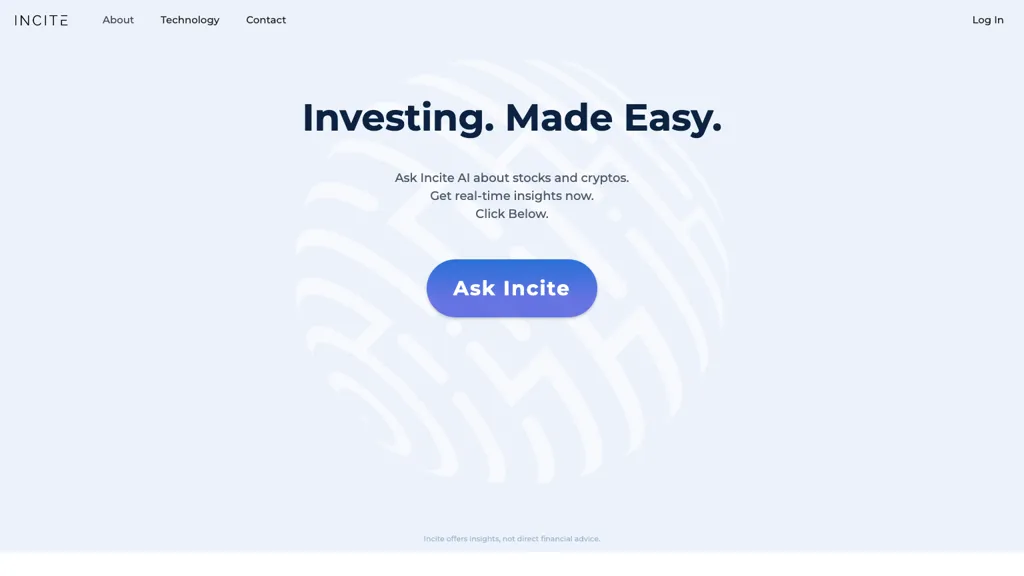20 Great News To Selecting AI Stock Predictions Platform Sites
20 Great News To Selecting AI Stock Predictions Platform Sites
Blog Article
Top 10 Ways To Assess Ai And Machine Learning Models For Ai Platform Analysis And Stock Prediction
It is crucial to evaluate the AI and Machine Learning (ML) models that are utilized by stock and trading prediction systems. This will ensure that they deliver accurate, reliable and actionable insights. Models that are poorly designed or has been exaggerated can result in inaccurate forecasts as well as financial loss. Here are 10 best suggestions to assess the AI/ML platforms of these platforms.
1. Learn the purpose of the model and its Method of Approach
Clarified objective: Determine the purpose of the model, whether it is for trading on short notice, investing in the long term, sentimental analysis or a risk management strategy.
Algorithm transparency - Check to see if there are any information about the algorithm (e.g. decision trees or neural nets, reinforcement, etc.).
Customizability - Determine if you can tailor the model to meet your strategy for trading and your risk tolerance.
2. Assess the performance of your model using through metrics
Accuracy: Check the accuracy of the model in predicting the future. However, do not solely use this measure since it can be misleading when used in conjunction with financial markets.
Recall and precision: Determine how well the model can identify real positives, e.g. correctly predicted price fluctuations.
Risk-adjusted gain: See whether the forecasts of the model can lead to profitable transactions, after taking into account the risk.
3. Check the model by Backtesting it
Historic performance: Use old data to back-test the model to determine the performance it could have had in the past under market conditions.
Test the model on data that it hasn't been trained on. This will help to avoid overfitting.
Analyzing scenarios: Examine the model's performance in different market conditions.
4. Check for Overfitting
Overfitting sign: Look for models that are overfitted. These are models that do extremely well on training data and poorly on unobserved data.
Regularization techniques: Find out whether the platform is using methods like normalization of L1/L2 or dropout in order to prevent overfitting.
Cross-validation: Ensure that the model is cross-validated to test the generalizability of the model.
5. Assess Feature Engineering
Relevant features: Determine whether the model incorporates meaningful features (e.g. price, volume and emotional indicators, sentiment data macroeconomic variables).
Select features with care: The platform should only contain statistically significant information and not redundant or irrelevant ones.
Updates to dynamic features: Make sure your model has been updated to reflect new features and market conditions.
6. Evaluate Model Explainability
Interpretation: Make sure the model is clear in explaining its predictions (e.g., SHAP values, feature importance).
Black-box models can't be explained: Be wary of platforms using overly complex models including deep neural networks.
User-friendly insights: Make sure the platform gives actionable insights which are presented in a way that traders will understand.
7. Review the model Adaptability
Market changes: Check if your model can adapt to market fluctuations (e.g. new rules, economic shifts, or black-swan events).
Continuous learning: Ensure that the platform regularly updates the model with fresh data to boost the performance.
Feedback loops: Ensure that your platform incorporates feedback from users or real-world results to refine the model.
8. Be sure to look for Bias, Fairness and Unfairness
Data bias: Make sure the information used to train is a true representation of the market and free of biases.
Model bias: Determine if the platform actively monitors the biases in the model's prediction and mitigates the effects of these biases.
Fairness: Ensure that the model doesn't unfairly favor or disadvantage particular stocks, sectors or trading strategies.
9. The Computational Efficiency of the Program
Speed: Assess whether the model is able to generate predictions in real time or with minimal latency, especially for high-frequency trading.
Scalability: Find out whether the platform has the capacity to handle large datasets with multiple users, and without any performance loss.
Resource usage: Check whether the model makes use of computational resources effectively.
10. Transparency and accountability
Documentation of the model. You should have an extensive description of the model's design.
Third-party audits: Check whether the model was independently audited or validated by third parties.
Verify that the platform is outfitted with a mechanism to identify the presence of model errors or failures.
Bonus Tips
User reviews Conduct user research and research case studies to assess the model's performance in the real world.
Trial period: You can utilize the demo, trial, or a free trial to test the model's predictions and usability.
Support for customers - Make sure that the platform has the capacity to offer a solid support service to solve problems related to model or technical issues.
With these suggestions, you can evaluate the AI/ML models of platforms for stock prediction and make sure that they are accurate, transparent, and aligned to your trading objectives. Read the recommended ai trade url for blog recommendations including trading with ai, ai investment app, ai chart analysis, ai stocks, trading ai, ai trading, ai for investment, ai for investing, options ai, ai stock and more.
Top 10 Tips On Assessing The Transparency Of Ai Stock Predicting/Analyzing Trading Platforms
Transparency can be a key element when evaluating AI trading and stock prediction platforms. Transparency allows users to confirm predictions, be confident in the platform and understand the way it functions. Here are 10 tips on how to assess the transparency of platforms.
1. An Explanation for AI Models that is Clear
Tips Check to determine whether the platform provides a clear description of the AI models, algorithms and platforms that are used.
Knowing the technology behind it lets users evaluate its reliability.
2. Disclosure of Source Data
Tips: Ensure that the platform reveals the data sources that it uses.
The platform uses reliable and complete data If you are familiar with the sources.
3. Backtesting Results and Performance Metrics
Tip: Be sure to seek out transparent reports on performance metrics, such as accuracy rates and ROI, as well as the results of backtesting.
The reason: Users can test the effectiveness of a platform by looking at its previous performance.
4. Updates and notifications in real-time
TIP: See if you can get real-time notifications and updates on trades, predictions or changes to the system.
The reason: Real-time transparency keeps users informed about every critical action.
5. Limitations: Communication is open
Tip Check that the platform is clear about its limitations and risks regarding trading strategies and forecasts.
The reason: Recognizing your weaknesses will build trust with users and help them make informed choices.
6. Raw Data to Users
Tips: Ensure that users have access to the raw data used in AI models or intermediate results.
Why: Raw data can be used to validate the predictions of others and to conduct an analysis.
7. Transparency of Costs and Fees
Make sure the platform clearly explains every cost for subscriptions, as well as any hidden costs.
Transparent pricing reduces the risk of unexpected costs and builds confidence.
8. Regularly scheduled reporting and audits
Verify whether the platform publishes regular reports, or undergoes audits conducted by third parties to verify its effectiveness.
The benefits of independent verification are that it increases credibility and accountability
9. Explainability in Predictions
Tip: Assess whether the platform explains the specific ways in which recommendations or predictions are made (e.g. important features, decision trees).
Why is this? Explainability allows users to gain insight into the rationale of AI-driven decisions.
10. User Feedback Channels and Support
Tip - Check if the platform provides open channels for feedback and support from users and provide a clear response to users' concerns.
Why: Responsive communications demonstrate a commitment towards transparency and user satisfaction.
Bonus Tip : Regulatory Compliance
Check that the platform meets all financial requirements. It should also announce its compliance status. It adds an additional layer of trustworthiness and transparency.
You can make educated decisions by assessing all of these elements. Take a look at the top cool training on investing with ai for website info including free ai stock picker, ai for trading stocks, ai trading tool, how to use ai for stock trading, stocks ai, chart analysis ai, ai copyright signals, ai for trading stocks, best stock prediction website, ai in stock market and more.